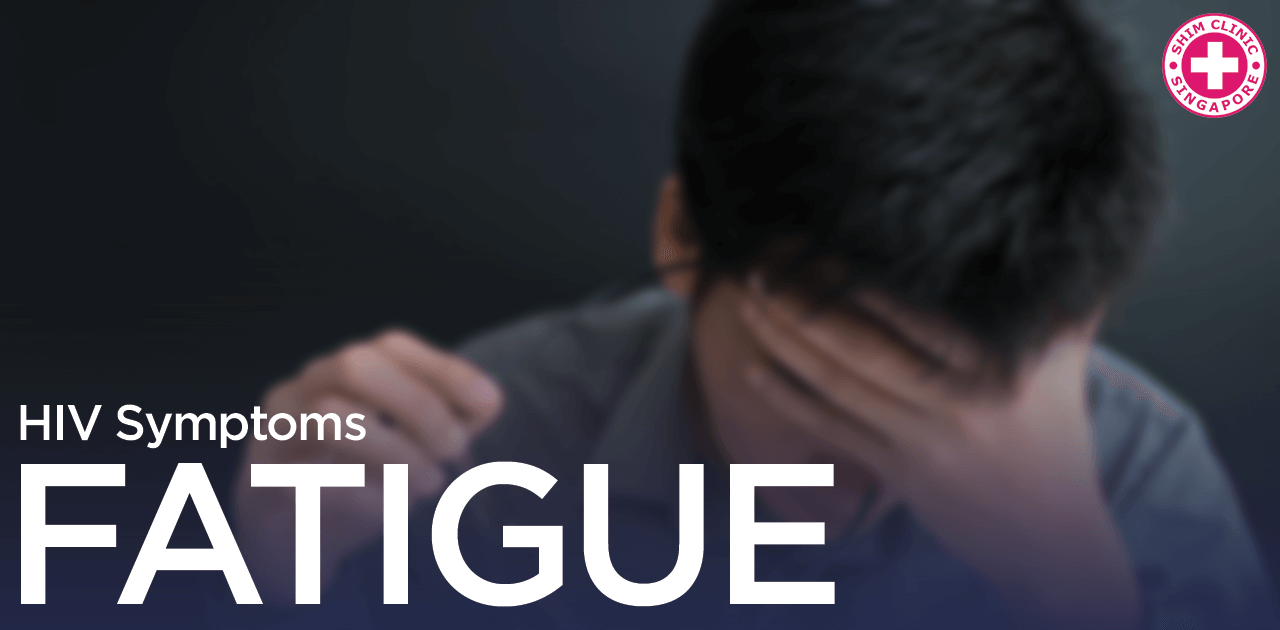HIV Fatigue Singapore | Shim Clinic
| Help me about HIV Fatigue ! |

| Permalink: https://shimclinic.sg/hiv-fatigue |
Many people who become infected with HIV don’t experience symptoms, but some people experience an acute HIV infection, with symptoms such as fatigue. Those affected feel abnormally tired and have difficulty completing their normal activities. An HIV test is needed to make the diagnosis.
While it’s common to have no symptoms when first infected with HIV, some people do experience an illness during this time. It’s known as acute HIV infection. It starts 2 to 4 weeks after you’re exposed to HIV, and can last for a few weeks. Many different symptoms can occur during this time.
One common symptom of acute HIV infection is fatigue. People may report a general feeling of tiredness. They may feel fatigued when doing activities that normally wouldn’t tire them out, such as walking from a parking lot into a store. Some people feel so tired that simply getting out of bed or getting off the couch feels like a huge effort. Although some people push through the fatigue and try to continue with their daily activities, others find that they simply can’t go to work or do other normal activities.
Fatigue often occurs when the body is fighting an infection. In order to use resources to fight off a virus or bacteria, the body needs to conserve its energy for the immune system to use. This means there’s less energy available for other things, like moving around and getting things done. This is why you often feel tired when you’re sick.
- Symptoms of acute HIV infection can occur starting 2 to 4 weeks after the exposure, and lasting up to a few weeks.
- One common symptom of acute HIV infection is fatigue.
- Fatigue is common in daily life, but when it’s due to an infection, people will feel abnormally tired and are usually aware that they’re sick.
- It’s common for viruses to cause fatigue, because the body is trying to conserve energy to use to fight off the infection.
- If you have fatigue and have had a potential HIV exposure, let your doctor know about your symptoms and the exposure. The right type of HIV test must be used to catch the infection in its early stage.
Fatigue is a symptom of many common illnesses. For instance, common viruses that cause respiratory illnesses (like a cold or the flu) or gastrointestinal illnesses (the “stomach flu”) also usually cause fatigue. In fact, with the fast pace of daily life in the modern world, many people feel fatigued on a daily basis. However, the fatigue of acute HIV infection will be abnormally strong, and will not feel the same as the usual daily fatigue of being stressed and too busy. Still, even if they recognize that they’re sick, many people may not recognize fatigue as being on the list of potential HIV symptoms.
If you have fatigue and have had a potential HIV exposure in the previous few weeks (such as a condom that broke or slipped), you should get an HIV test, especially if you also have other possible HIV symptoms. Make sure you tell your doctor when your possible exposure occurred, and about your current symptoms. This is important, because some types of HIV test used for screening can’t catch a very early HIV infection. It takes time for the body to produce enough antibodies for these tests to turn positive. Your doctor will need to use a type of HIV test called a fourth-generation test, which looks both for antibodies and for antigens, which are proteins produced by the virus.
Sources:
Centers for Disease Control and Prevention. “HIV/AIDS.” Centers for Disease Control and Prevention. Published 05 Jul 2016. Accessed 27 Jul 2016. http://www.cdc.gov/hiv/
Mayo Clinic. “STD symptoms: Common STDs and their symptoms.” Mayo Clinic. Published 18 Mar 2015. Accessed 20 Jul 2016. http://www.mayoclinic.org/std-symptoms/art-20047081
Centers for Disease Control and Prevention. “Screening Recommendations Referenced in Treatment Guidelines and Original Recommendation Sources.” Centers for Disease Control and Prevention. Published 04 Jun 2015. Accessed 20 Jul 2016. http://www.cdc.gov/std/tg2015/screening-recommendations.htm
Centers for Disease Control and Prevention. “HIV Basics – Testing.” Centers for Disease Control and Prevention. Published 12 Jul 2016. Accessed 20 Jul 2016. http://www.cdc.gov/hiv/basics/testing.html
U.S. Department of Health & Human Services. “Post-Exposure Prophylaxis (PEP).” AIDS.gov. Published 21 Sep 2015. Accessed 20 Jul 2016. https://www.aids.gov/hiv-aids-basics/prevention/reduce-your-risk/post-exposure-prophylaxis/
| Timeline | HIV | STD | Pregnancy |
|---|---|---|---|
| Before exposure | |||
| Contraception (females only) | |||
| HIV PrEP (pre-exposure prophylaxis) - Stop HIV infection before exposure | STD vaccine: - Hepatitis vaccine - HPV vaccine | ||
| STD / HIV exposure | |||
| 0-72 hours | HIV PEP (post-exposure prophylaxis) - Stop HIV infection after exposure | STD testing * - Screening test - to look for asymptomatic infections - from previous exposures | Emergency contraception with the morning-after pill (females only) |
| 2 weeks | HIV DNA Test | ||
| 1 month | HIV 4th Generation Test - SD Bioline HIV Ag/Ab Combo - Fingerprick blood sampling. - 20 minutes to results | ||
| 3 months | HIV 3rd Generation Test - OraQuick® HIV-1/2 Antibody - Oral fluid or - Fingerprick blood sampling. - 20 minutes to results | STD testing * - Full & comprehensive - diagnostic test - to look for current infections | |
| Watch for | HIV Symptoms | STD Symptoms | |
| If infected | HIV Treatment | STD Treatment | Abortion |
References